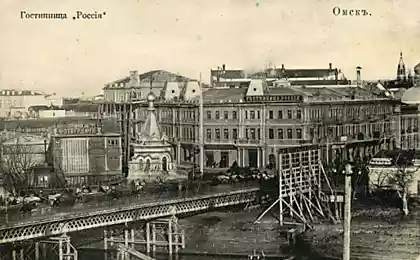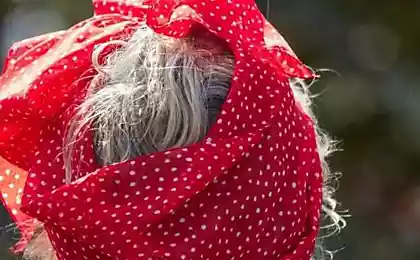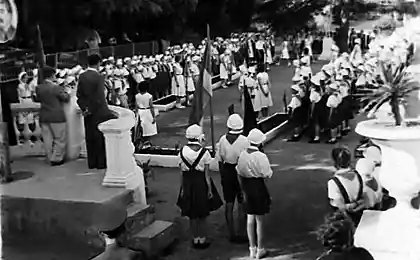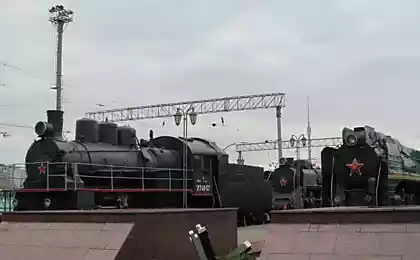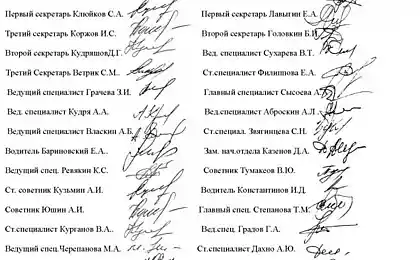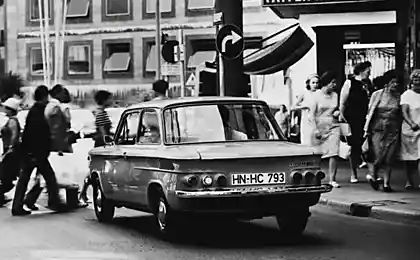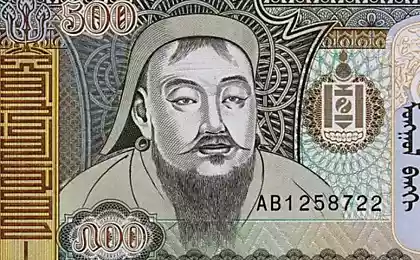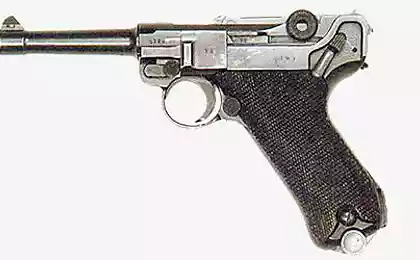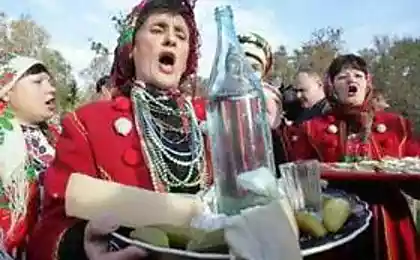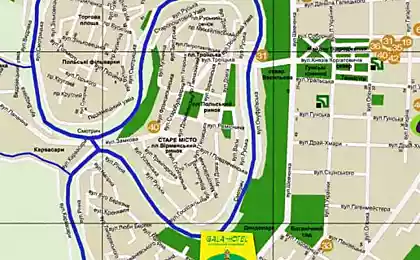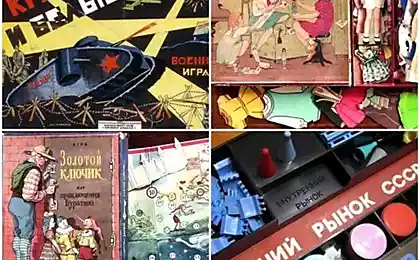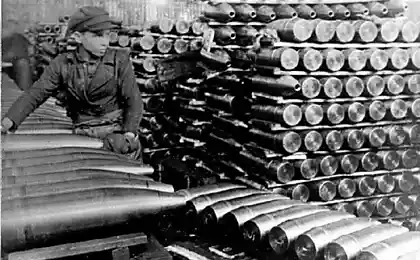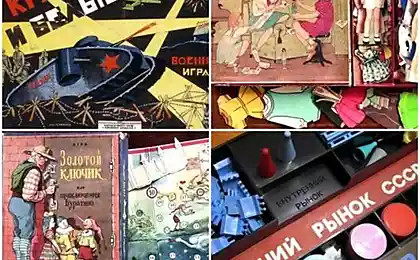1608
1980s
The history of the USSR of the 80s from family albums is the same as people saw it recently, of course, these photos can not cover everything that happened then. We, who are older, remember that time well, but those born in the 80s, not to mention those born later, know it mainly from the disgusting slander from the zombie box. If we remain silent, the devil will prevail.
Old Master. '80s. Kolomna. Photo by G. Chistyakov. A number of photos have a "continuation" these days. How it was in the USSR and how it is now. The first half of the 80s is very similar to the 70s, so very few photos are selected about school, kindergartens, holidays, etc. Anyone can watch the previous album.
The 80s are a very difficult period in the history of the USSR. This is his “golden period”, when there were no armies on Earth that could defeat us, the time of space stations and lunar settlement projects, the emergence of future technologies and the conquest of the harsh nature of the USSR. But at the same time, this is also the period of the development of his disease, which became fatal - the degeneration of the top into a disgusting clique. The time of the destruction of morality, lies and duplicity of ideologists, the beginning of civil and interethnic wars, Chernobyl, the time of the murder of a great country.
The 80s – this is the point of bifurcation, the fork – the USSR could become not a germ, but a real Society of the Future with developed and harmonious people, technologies of nature transformation, interplanetary flights, settlements on Mars, an unprecedented rise of science, technology, medicine, education. That's actually what it was designed to be. But events began to develop in a different way and the USSR-1 was killed by traitors in its own elite.
As we look at the unfolding global crisis and the economic misery of the West, we see that there were literally a few steps to complete victory. We didn't make it a little bit.
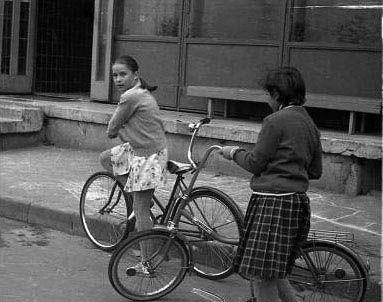
Bibirevo. Nach. 80s.
Still whole glass and doors in the entrances, there are no iron doors and large windows brewed with steel sheet - the entrance is light. Children can be released into the street without fear. Now it seems almost unbelievable.
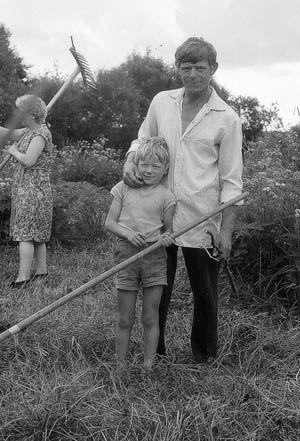
Haymaking. 80s
The horrors of Soviet collective farms.
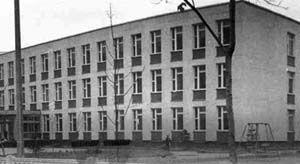
New School. Mid-80s
This is now the construction of a new school, a national event reported in the news. During the years of Soviet power, almost 200,000 (two hundred thousand) new schools were built in the USSR. There was enough money and enough children were born. The Germans destroyed 82,000 schools and rebuilt them. In the 70s - 80s, every year from 1,500 to 3,000 schools were built depending on the five-year plan - this is 5-10 new schools every working day, if it was told at least briefly - there would be no time for the rest of the news. It's hard to imagine now, isn't it?
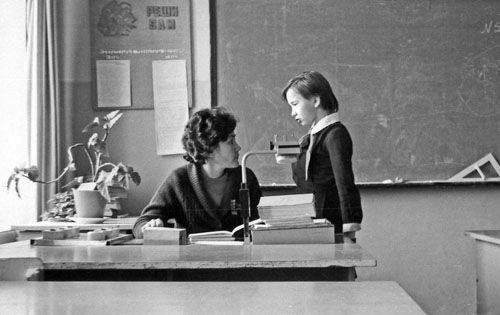
I won't do it again! 80s
Trust relationship between student and teacher.
It is in the West that the relationship between student and teacher cannot be personal, human. For example, in the United States and Canada, teachers can simply revoke their licenses for human relationships with students. There should be nothing human in the New Order—divided cog people—ambitious, unhappy, lonely, easily controlled. In the USSR it was very different. The ideal from the very formation of the USSR was a harmonious personality and the education system was built for this purpose. Another thing is that there were a lot of mistakes – for various reasons, partly from ignorance – after all, the country made the very first attempt in history to create such an education, partly because the initial start from the position of “Russia-which we-lost” was painfully low, partly because so much effort went to fight off enemies. And from a certain period onwards the degenerate Party leaders began to fear the possible harmonious man and did not persist too much in his education. Despite its shortcomings, the Soviet education system was the best in the world. It could have been much better, but it didn’t.
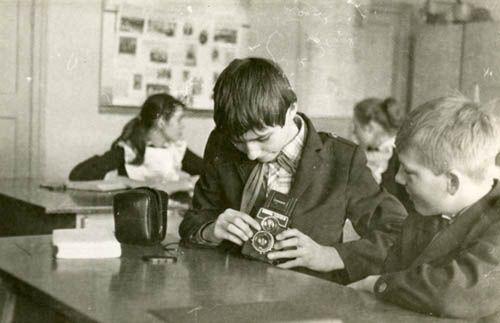
First camera. 80s
Many boys were fond of photography, electronics, modeling, sports. To do this, there were special Houses of Pioneers with many circles for every taste - photo, radio, dance, biology and so on.
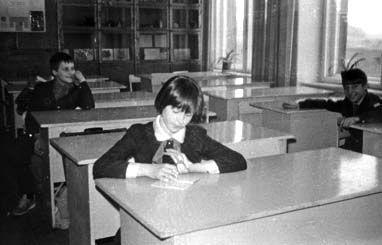
The first triangle. Early 80s.
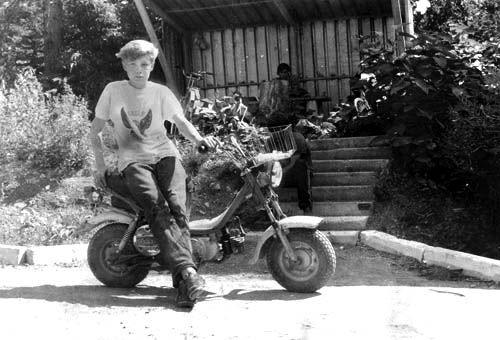
Scooter. Sakhalin. Sir. 80s.
In the USSR, they were produced since the 50s. In the production of motor vehicles (1.5 million per year), the USSR ranked 2nd in the world after Japan. Our cars were very actively sold for export. We met on our roads and imported scooters and mokiki – Czech, Japanese, even Italian. Mopeds and small scooters cost a little more than 100 rubles, the rights to them were not needed. The photo shows, formally speaking, a minimotoroller - do not "step" through the frame. The word “mocic” refers to the 50s and meant that he was kicked by kicking a kick starter. In reality, they were often produced with an electric starter. What kind of car was in the photo, he never admitted. I've seen them sometimes on the streets. But mostly there were other "big" ones like "Supreme."
Many boys in the USSR raced on mopeds, especially in the 80s.
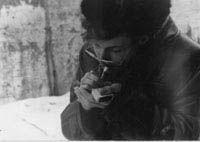
A cigarette behind the school. 80s
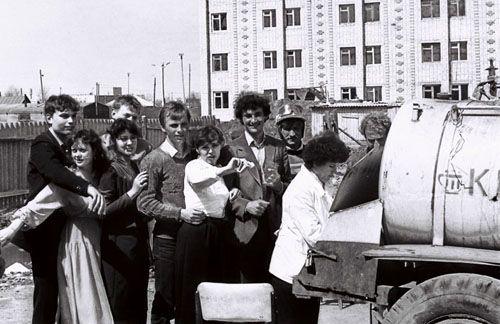
Kvass barrel. Siberia 80s
Kvass was very cheap. Glass - 3 kopecks., Politer mug - 5. Apparently, people celebrate some event - judging by the clothes, the girl is dressed in a dress, not the most comfortable for everyday life.
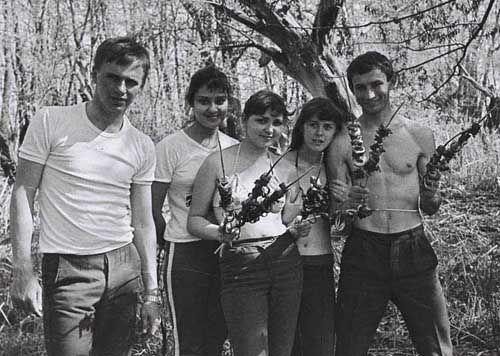
A barbecue in nature. Siberia. 80s
"There was no meat in the USSR," yeah. No matter what you look at the photos - all picnics with meat and kebabs.
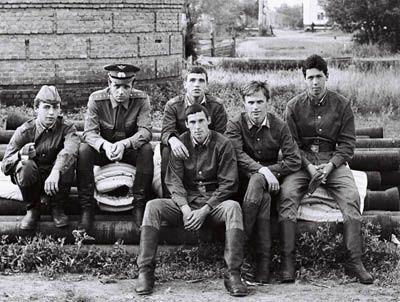
So we did. 80s
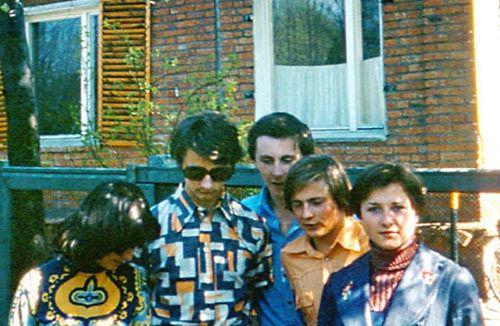
A group of young people in the country. Early '80s
These are not the majors, not the children of salesmen - ordinary boys and girls. Probably from families of scientists. I think it's the suburbs.
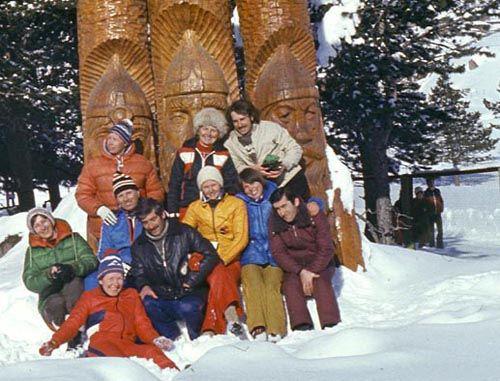
Employees of the research institute at the ski base in Elbrus. Early '80s
The Caucasian ski resorts were among the best in the USSR. Almost any Soviet person could go there. I emphasize any. Georgian resorts were famous, especially Gadauri and Bakhkuriani. Armenian Tsakhkadzor was one of the points of preparation of the Soviet team, the Uzbek Chimgan was excellent, as well as the ski resorts of Ukraine, Kyrgyzstan, the RSFSR - Altai, Ossetia and so on.
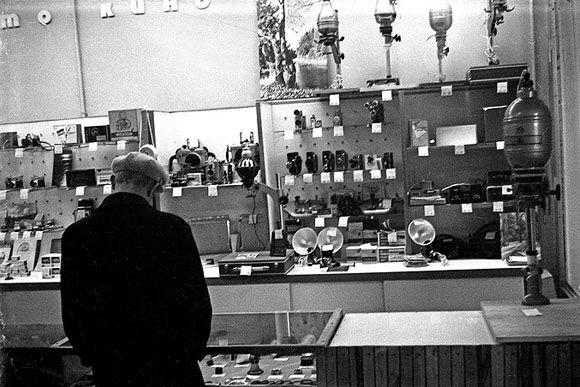
Typical photo shop. 80s
This is what a typical Soviet photo shop looked like. Cameras, all sorts of lenses, photo papers, reagents, lamps, flashes and other dope shops were just littered. I remember that time very well – I have been doing photography since 1980.
Soviet cameras were among the best in the world - cheap, high-quality and very reliable. They were exported to many countries around the world, even England (since the 50s). Reviews of Western experts on the quality of optics and mechanics were enthusiastic. Complaints were caused by the exterior finish - they did not look as presentable as the Western, and, of course, the packaging. The British government has repeatedly banned the export of advanced Soviet models to save their manufacturer. Allowed only the import of cheap like "Amateur" and then "Schange". It’s a free market, you know.
It is hard to imagine now, but fakes under the Soviet brand Zenit were quite common - it was very popular. This is especially true for small Japanese companies.
Soviet cameras were bought or exchanged privately by foreigners. The USSR produced about 10% of the world’s cameras (about 3,500,000). 60-70 years called the "golden time" of the Soviet photo industry. Since the 80s, there has been a periodic shortage of cameras. What is very interesting, the problems began to appear not when the products became complex, but with their simplification and reduction of the range. That is, these were not problems of ease of the system, but problems of centralized control disruption.
Nevertheless, the position of the USSR in this segment remained extremely strong. Gorbachev’s reforms and “perestroika”, as well as everything else, dealt a mortal blow to the industry.
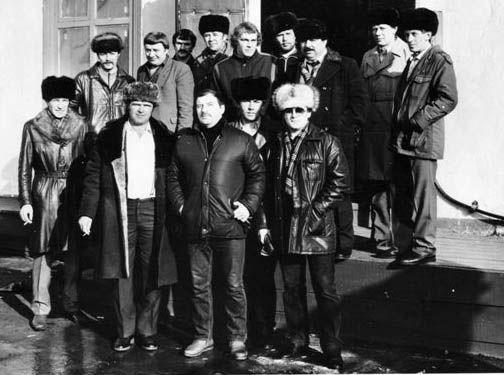
Residents of Pevek. Chukotka. Mid-80s
Just hard workers from the North. These are not employees of the Central Committee, not thieves or bullies. Leather coat with fur collar and very fashionable then "blown" jackets. We went to the North to make good money. Having worked in the north for 10-15 years, you could easily move to the south, buy a house or a cooperative apartment, a car and many more will remain. In the USSR, they knew that “the North has money.”
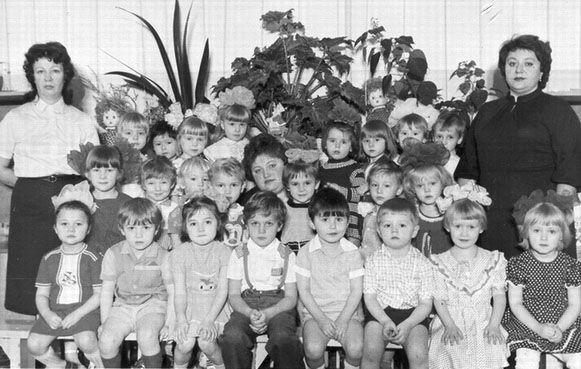
The Bear Kindergarten. Chukotka '80s
Therefore, the northern regions were developed very quickly. Beautiful cities and towns were built there, with wonderful kindergartens, schools and hospitals. In total, about 120,000 kindergartens were built in the USSR during the years of Soviet power.
The horrors of totalitarian childhood. Tea worn by ragged children?
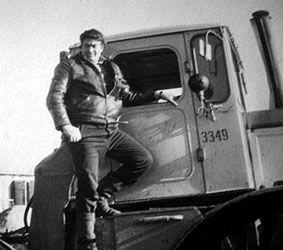
Northerner Temchenko. Chukotka '80s
Like that, in a leather jacket and on the Kirovets. The people in the North have always been tough and strong, otherwise it is impossible.
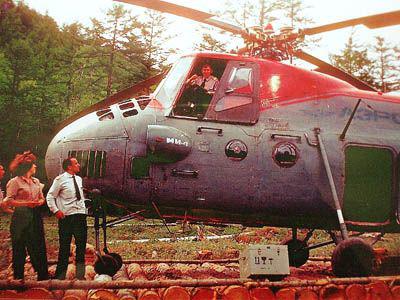
Delivery of goods to the taiga. 80s
The USSR was the first in the world to begin intensive development of the North. Cities were built, military bases were built, a huge amount of research was conducted. Almost all the resources used today were discovered during the Soviet era.
Half of the USSR was in the permafrost zone. Even the zone of Baikal belongs to the zone of permafrost with a predominance of taliks (large areas of thawed soil). Despite the largest land area (1/6 of the Earth’s landmass), it is extremely difficult to use.
Not great economic sense in the territory, which consists of tundra, swamps and impenetrable taiga, right? But there are also mountains and deserts, there are simply cold areas where any activity is ineffective compared to warm regions. These are areas of Karelia, the White Sea, and northern Russia – there is no permafrost there, but it is very uncomfortable to live and work. As a result, the area of territory relatively convenient for human activity in Russia has always been very small.
In terms of the area of effective territories, Russia is inferior to countries such as Brazil, the United States, Australia and China. In particular, the effective territory of Russia is only 70% of the effective territory of the United States. This is despite the fact that a fairly large part of the territory of our main enemy is in an exceptionally favorable zone for activity - the tropics and subtropics (Florida, the Pacific coast, Hawaii, southern Texas). Russia’s “effective territory” is very different from that of England and France.
But we don’t have any other territory, so we have to use the one we have. It's stupid not to use half your land, is it? Inconvenient and expensive? In the capitalist system, of course. For example, Canada has not been able to develop its northern regions in principle, despite several attempts, and 90% of the population is squeezed to a warm border with the United States.
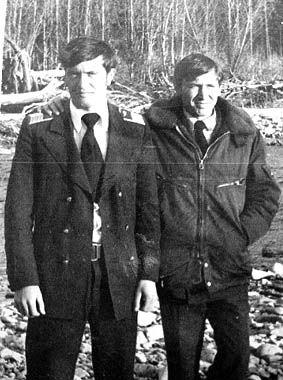
Northern pilots. 80s
The USSR was built as an integral system, as a single indivisible whole, and in it the development of the North and inconveniencies was very profitable. Everything was built in the complex - cities, power plants, roads, ports, mines, etc. Obviously, a large power plant for a mine has more efficiency than a small and temporary one. It is obvious that a large power plant does not make sense to build only for a mine and a small village of shift workers. Therefore, its power must be used for a fairly large settlement, transport, processing cycles, a port, etc. And if there is a port, why not use what the sea gives - fish, crabs, shellfish? The life of the shift worker, frankly, is very uncomfortable, away from the family, and here everything is nearby - schools, kindergartens, hospitals, sanatoriums, dispensaries, beautiful sports halls and libraries, television satellite - the Orbita program.
Individually, it was ineffective or ineffective, but together it was very effective. And given the role it played for the security of the state, it becomes clear that the role of the North is huge.
Immediately became available storehouses of minerals. At the same time, northern routes, ports, infrastructure, resorts, tourist routes (Kamchatka, Sakhalin, Kolyma) appeared on the basis of already formed infrastructure and so on. The cruel northern nature turned its other side - an amazing and harsh beauty. You just have to be able to handle her.
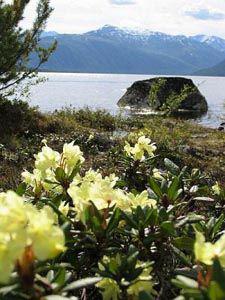
Environs of P. Sinegorje
The USSR was able to do this better than anyone else in the world, ahead of the whole world not by years, but by an entire epoch. His leadership in the development and transformation of cold lands was absolute. Integration, a single planned system - the know-how of the USSR, the first society of this type.
But that’s not all – space mirrors were being prepared to illuminate northern cities, creating a kind of thermal oases in the Arctic without destroying the ecosystem of the surrounding tundra.
The North is much cheaper than Mars. Mars and Venus were also planned. Interestingly, the development of Mars was planned to be conducted with the experience of the development of the Soviet North.
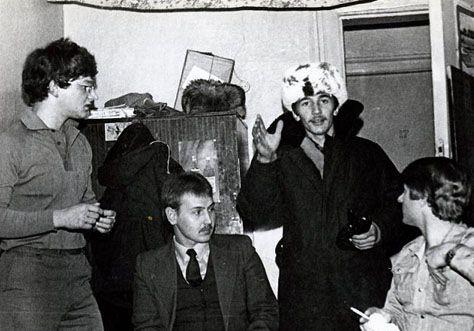
The dormitory. Cape Schmidt 80s
A network of small, carefully planned cities began to cover the North.
First, hostels were built for builders and shift workers, and then cities and towns were built, which is of any value to see. No exaggeration.
By the way, as a result of the collapse of the USSR on 65% of the territory of the Russian Federation is in the zone of permafrost and the development of the North, the top of the country is not interested - they are here temporarily.
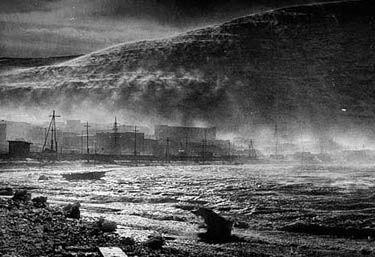
"Yuzhak" - Singer, Chukotka 80s
In addition to the severe cold in those places there is another test - hurricane winds. Yuzhak is usually a spring wind bringing a storm.
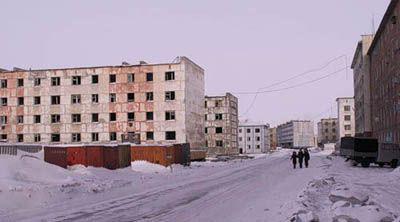
Singer now
One thing is obvious: market economy is many times less efficient than socialist economy. The example before my eyes is the USSR. The “inefficient” USSR had enough money to build cities, maintain a powerful army, brilliant science, excellent education, advanced technologies in many areas, the most advanced space, many schools and kindergartens, a decent, although not rich by Western standards, life for almost the entire population, money was enough even to support developing countries and communist movements around the world. None of this in Russia in that form is close – there is no money for it, despite the fact that the future of our children is being exported at a rapid pace – raw materials, and the country is simply being sucked to the bottom.
The Soviet Union exported raw materials, but it accounted for most of its export earnings even in the worst Gorbachev years. In the 80s, the USSR earned only $ 12 billion a year from the export of hydrocarbons out of about $ 80 billion of total exports.
The Soviet Union was a major exporter of metallurgical, energy, chemical and other industrial equipment, ractors, cars, ships, helicopters and aircraft, televisions (mainly w / b), watches, optics, high-tech devices, isotopes, light medical equipment, medicines, weapons. All this has been practically destroyed, only a part of the war and metallurgy has remained since the days of the USSR, and even then only the old - nothing has been created under the "effective owners" of the new. The lion’s share of income is the export of raw materials.
That is, the conclusion is really this – “freed from totalitarianism” Russia is many times less effective than the USSR. Not to mention such concepts as humanity, morality, etc.
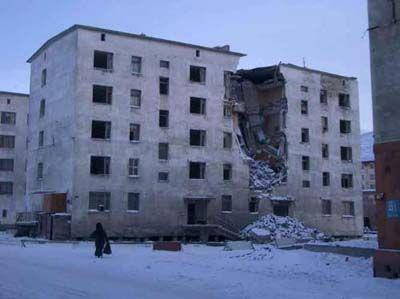
Singer now
Moreover, the continuation of “reforms” and the existence of the current ruling elite is the death of Russia and many other fragments of the great country. Death is quick and cruel.
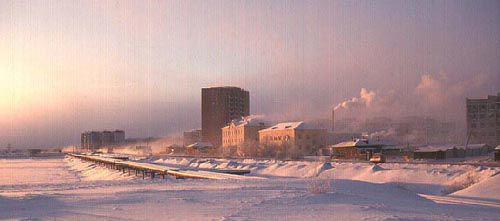
Kadykchan 80s
The mining town of Kadykchan. Once one of the most beautiful cities in the northeast of the country. A deposit of unique stone coals.
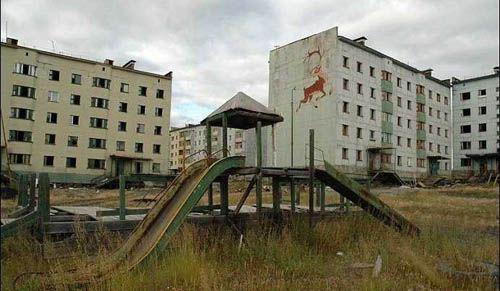
The Dead City of Kadykchan Now
The city, as they say in those parts, was “thawed” (Northern slang), that is, the heating and water supply system was frozen in the northern frosts. The authorities considered it unprofitable - a sharp decline in production in the country made unique coals unnecessary. Now, to restore it, you need to change absolutely all the pipes in the city, inside every building, every room. In essence, it means rebuilding the city. All. The city is completely dead.
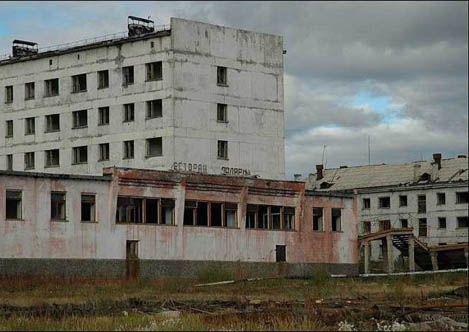
The Dead City of Kadykchan Now
Such cities were quite profitable under the USSR. The new regime and the formed socio-economic system showed complete inability to control a complex device. It is not even able to maintain the legacy inherited from the USSR – cities, infrastructure, factories, science, education, the army. There is no talk of building a new one. Who spoke of the “inefficiency” of the Soviet Union?
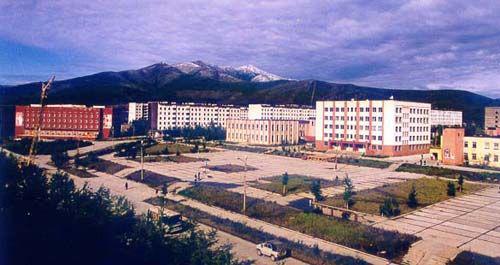
Signogorye. Kolyma, 80s
The most beautiful town-village of Magadan region. - Sinegorye. The city of hydropower is the world’s first large hydroelectric power plant built in extremely harsh natural and climatic conditions. The average annual air temperature minus 12 ° C, the continuous spread of permafrost up to 300 m thick, the temperature in winter falls below sixty degrees, seven months a year with a negative temperature make the construction of the Kolyma HPP a unique phenomenon in the practice of hydropower construction.
The height of the dam is 130 m. The HPP building is located deep underground and accommodates five hydroelectric units with a total capacity of 900 MW in an artificial underground cave. Water to the units is supplied in five tunnels with a length of 200 meters each. It is a masterpiece of world hydropower construction and energy. The first hydroelectric unit was launched in 1981. The most unique power plant was built in just 7 years.
The town-village for 10 thousand inhabitants had very comfortable residential houses, a hotel, a cinema, a sports complex with a swimming pool, a game and gymnastics hall, a hospital, a clinic, a dispensary in a beautiful place, a kindergarten, a school. The Communists mocked the people as much as they could.
In total, on the Kolyma River it was planned to create a cascade of three hydropower stations, building additionally to the Kolyma HPP Ust-Srednekanskaya (started in 1991) and Verkhne-Kolymskaya. Well, as you understand, after the collapse of totalitarianism somehow did not work out.
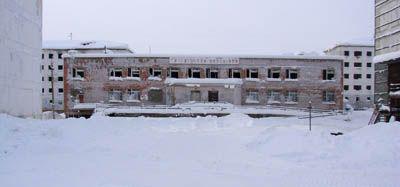
Signogorye. Now.
There are still areas that support the Kolyma HPP, but now - like this. The population has declined dramatically. Entire parts of the city have been destroyed. People live so well that they don’t even need privatized restaurants. The only building built in 17 years is a church. How about without her?
And how many such cities and towns are dead and half-dead in Russia? How many military towns were killed that could live well? There is no place for them and for the people who lived in them.
It is simply called a crime against one’s own people and country. This is what used to be called treason.
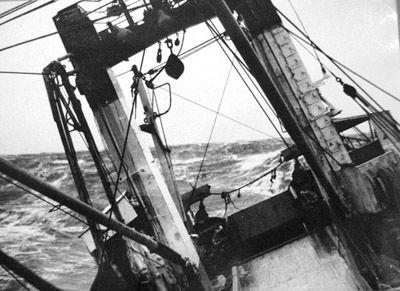
Strong pitching. Sakhalin Fishermen. 80s
The USSR had a large fishing fleet. After the destruction of the “inefficient USSR”, the number of fishing vessels in Russia decreased 2 times, more than 80% of ships are worn to the extreme and belong to the so-called “critical age”, the fleet was practically not updated – the shipbuilding industry was destroyed cleaner than after the defeat in a major war. Russian shipbuilding, which was one of the largest in the world, was on the verge of extinction.
In the late 80s, the USSR produced about 11 million tons of seafood, now about 3 times less, and 80% of officially mined for a pittance is sold to foreigners. Not processed food, not fished. But it's not just malice -- the processing industry is almost dead. The export of unprocessed seafood is a characteristic feature of a third world country.
Now the consumption of seafood in Russia is about 10 kg / person with a medical norm of 19 kg, in the USSR, by the way, was consumed in the 80s about 20 kg / person.
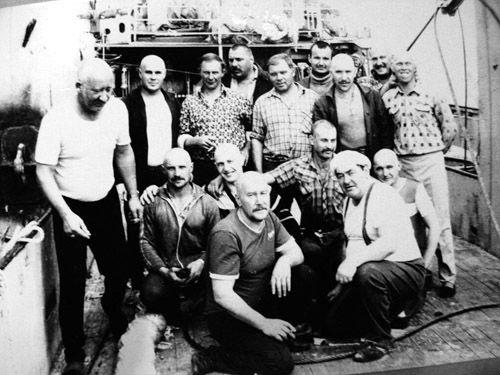
Sakhalin Fishermen. 80s
You can immediately see - very cool, persistent, skillful and brave guys.
157464
Trying to fix the hole on your own. Sakhalin 80s
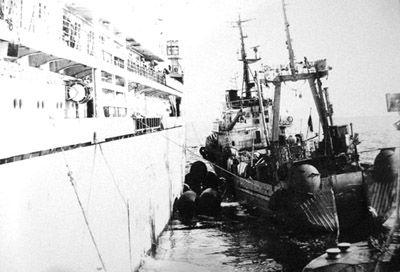
Then fish and crabs were handed over to their base, and not quietly to the Japanese. According to the former chairman of the State Committee for Fisheries of the Russian Federation, Evgeny Nazdratenko, more than 40 of our vessels are unloading daily in the ports of Hokkaido. About 2 million tons of fish are smuggled out, no one really knows how much. According to Nazdratenko, due to Russian poaching, the Japanese have 1500% of their profits, equipped their ports and all infrastructure. The total amount stolen from our people is at least $ 7 billion a year. A “fish mafia” has formed and is thriving, extracting the resources of the Far East. There is no real fight against this, and the threads go to the very top – the so-called “government of Russia”. According to conservative estimates, the “fish mafia” pulls out about $ 3 billion a year. Russia’s fishing industry has been called the most corrupt of all.
Vessels and floating depots were sold for a pittance to foreigners, ruined by incompetent and predatory exploitation of the remnants of the Soviet fleet. The loss of one of the largest and most successful fleets in the world is not amenable to precise calculation. Many ships were sold for a pittance, many were destroyed by exploitation for slaughter, but even more were transferred under other flags.
58% of Russian ships now fly foreign flags, which is more profitable for ship owners. With large ships, the situation is generally shocking - by the time of the collapse of the USSR, about 1,800 large ships sailed under its flag. Currently, the Russian tricolor on the flagpole only 172 civilian ships. Patriotism has nothing to do with it - the main benefit, the shipowners say without hiding.
Our Pacific waters are now dominated by the Japanese. In 1998, the “government” of Russia concluded an agreement under which Japanese fishermen opened fishing in the South Kuril Islands without complying with the laws and regulations of Russia in the field of fisheries.
If this is not a state crime, what is it?
Old Master. '80s. Kolomna. Photo by G. Chistyakov.
Such people built the USSR after the war.
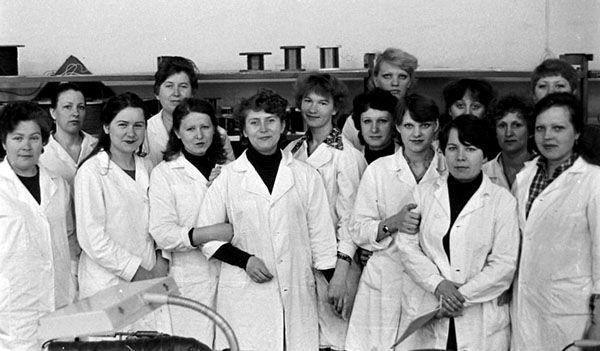
They worked for the defense. Factory of Hydroacoustic Devices "Red Ray" (photo by V. Dronov) 80-ies
The main purpose of the plant was the production of sonar and navigation systems for the Navy. High-tech.
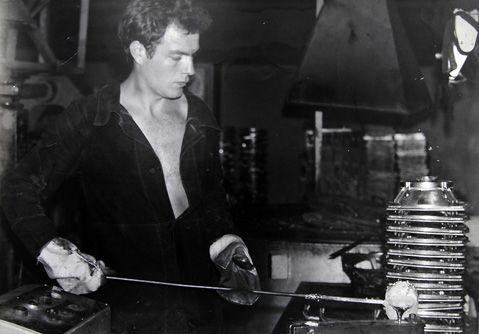
Chassis for speakers such as Radio Engineering 35 AC. Photo: Kosaniuk L.
In addition, the plant produced very good audio speakers 35AS "Cliver", Ukraine, d Red Ray - foundry produces very popular at the time AC, analogues of Riga. The photo shows ready-made chassis for speakers.
Now this plant is killed - it was closed because he could not pay taxes, and his property was transferred to a small enterprise selling ketchup and vodka. The workshops of mechanical, frame-stamping, assembly and installation, production of plastics, printed circuit boards, galvanic and paint coatings, including land and buildings were estimated at about $ 6 million. Haytekovsky plant of this level is worth several billion.
They say that the so-called “Ukrainian state” is poor as a church mouse. So any richest country will go bankrupt if you sell property 3 orders of magnitude cheaper than it costs.
Strangely, it was a prosperous Soviet republic, and hysteria with self-determination was arranged under the pretext that “Ukraine is being eaten by Muscovites.” Like a rich and wonderful life "independent and independent" if not in the USSR.
The result of all this is "on the face." Just like on the face of the so-called President Yushchenko.
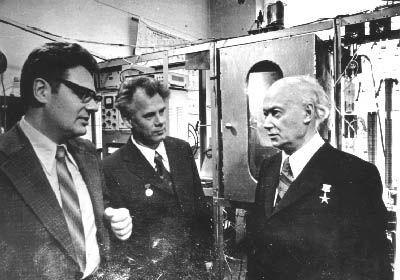
Chemical scientist R.A. Buyanov (center) 80s
A few words on the subject of Soviet science. The topic was chosen specially unassuming – chemistry.
The typical worthy Soviet scientist Roman Buyanov created a fundamental theory of the magnetic action of catalysts in the low-temperature conversion of ortho-hydrogen into para-hydrogen. Sounds harsh, doesn't it?! And the result of this was the creation of an entire industrial production of liquid vapor-hydrogen — it was the fuel on which our spacecraft Buran flew.
He and his collaborators further deciphered the “carbide cycle mechanism” as a result of which fundamentally new types of catalysts and what are now called “nanomaterials” – carbon nanofilaments were created. The entire industry of the USSR for the production of synthetic rubber worked on these catalysts for more than 10 years. These technologies were bought from us by advanced countries like France. Modestly so. By the way, scientists have developed a scientific classification of all possible causes of catalyst decontamination.
Soviet science was ahead of competitors in this field by 5-10 years. And in others, there were many more.
In 1979, Buyanov was appointed head of the Coordination Center of the COMECON countries on the problem of “Development of new catalysts”. On his initiative, a technical project was prepared for the construction of a specialized catalyst factory in Tomsk, where the production of fundamentally new catalysts developed in social countries was soon to begin. We, in theory, had to break ahead sharply, the profit of the plant promised enormous. Needless to say, the planned construction has not begun? The Soviet Union was facing an unprecedented technological takeoff and not only in the field of catalysis. That was one of the main reasons why he had to be killed so quickly.
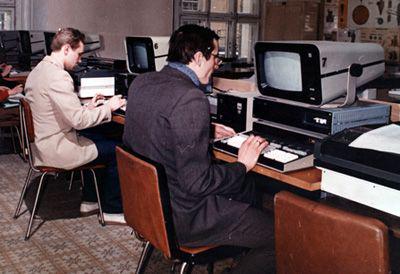
Training Laboratory of the Institute of Chemical Technologies. DCK computers. 80s
Soviet computers are used to solve problems of chemical technology. Computers DVK (Dialogue Computing Complex) development and production of Zelenograd - the Soviet "Silicon Valley". They solved their task quite successfully, moreover, they were combined into a kind of local networks through special buses with control computers SM-1425. I've worked for them. There was no fundamental lag in electronics and computers from the West then. This was the result of “reforms.”
Do you know what happened to the factory that produced it? After a series of raider seizures under the so-called "President" Putin controlling stake in the plant was sold for... $ 7 million.
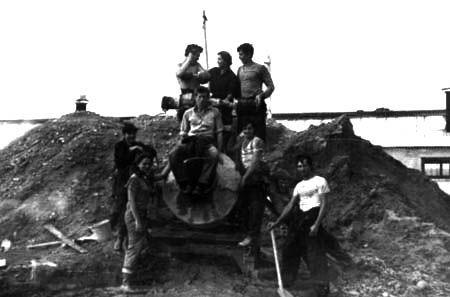
Squad 80s. The cowboy.
The first racks appeared in the USSR in the 60s and, in theory, were a very useful undertaking. The point was that during the summer holidays, students formed special detachments and went to work for 1.5-2 months where workers were needed. Not only was there no unemployment in the USSR, there was a constant shortage of workers. Students typically worked on urban construction projects in rural areas to build housing and infrastructure. There were also construction teams that worked on the restoration of cultural monuments (for example, in Kizha), there were detachments of student guides in trains, etc.
Stroyotrupov’s memories are some of the best for many students during their student years. Friendship, student novels, acquired construction professions, bonfires and guitars, construction traditions, Spartakiads – in general, it was very great. There were often adventures, for example, I had the opportunity to participate in extinguishing the steppe fire. In the construction team, poor students could work well.
Of course, they drank in the construction teams, but they knew the measure - you can not work effectively with heavy drinking. Payment was usually piece-premium ("chord"), that is, if you have time to hand over the object by a certain date - you will receive from 15 to 25 of the piece amount on top. Therefore, they did not want to tolerate a drunk and a fool in the squad. Construction squads were completely self-governing units and formed themselves - that is, the squad assembly could accept anyone and anyone to field.
The first detachments were built on the principle of “commune”, that is, the earned was divided equally. But in reality, it has resulted in a sharp drop in productivity and the disinterest of good workers—why plough to the ground if your money goes to some armless lazy person? For this reason, since the 70s, a time-tested “kolkhoz” system was introduced, but they did not enroll additional workdays, but established KTU – the coefficient of labor participation, that is, the coefficient by which the base salary was multiplied. KTU was established by universal open voting at the meeting of the detachment. I must say, the CTU was established quite fairly.
They were a great opportunity to see our great country. When, for example, would a person go to a Kazakh village or to the White Sea? And it was very useful for novice intellectuals to feel what hard physical labor is.
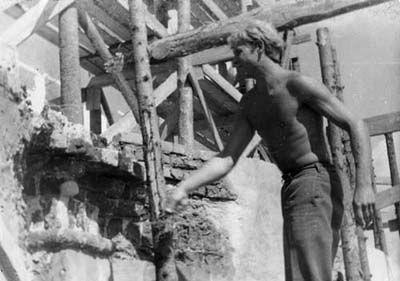
"Rather, the chord is on fire!" Squad 80s. The cowboy.
But the SSO has its other side: the construction teams (“construction workers”) of the 80s in many places degenerated into the most ordinary coven with all its disgusting sides. The processes of decomposition of the top of the country, which became quite obvious by the mid-80s, had a very strong impact on the construction movement. Although... where did they not reflect?
"Sabashki" - seasonal work for the purpose of large earnings, a phenomenon that formed in the USSR in the 60-70 years. Due to the processes of intensive urbanization, the share of the rural population decreased sharply, while the share of the population with higher education grew rapidly, that is, the number of workers in agriculture for heavy physical labor decreased significantly. Khrushchev’s destruction of the highly developed system of cooperatives and artels in the USSR led to a strong imbalance in the economy. There was a large number of orders from the kolkhozes, which could not fulfill the interkolkhozstroy — a specially created centralized organization. Small jobs were hard to do - there was no scope for a centralized organization.
At the same time, the progressive wage system, which in Stalin’s time was equated with anti-state activity, was destroyed. Progressive system is when the plan is over 100% was the coefficient of payment for the share exceeding 1.5, over 150% -2, over 200% - multiplier factor 3. That was "slave labor." Did you think that the mass movement of the Stakhanovites was based on pure enthusiasm under the leadership of the Communist Party? Yeah. Of course, there was enthusiasm, but there was also good money. And then all this was taken from people and the people began to respond with ever-increasing futility.
The kolkhozes and sovkhozes retained the share of financial and organizational independence left over from Stalinist times. They had the right to enter into seasonal agreements with the so-called temporary labor collectives. From this possibility and the beginning of the deregulation of the USSR economy in the post-Stalin period, the “sabashki” were born.
The unusual situation was that the Sabbath brigades were usually staffed by non-professional builders who worked during their summer vacation. Often in the brigades of Sabbaths worked researchers with academic degrees. Worked with a gross violation of safety, 12-16 hours a day. During the season (about 2-2.5 months) with the “correct hill” (head of the brigade), a good Sabbath earned 3-4 thousand rubles, and sometimes up to 7-8 thousand, which was significantly more than his annual earnings at his main job.
What this had a negative psychological effect on the image of the country in the eyes of its citizens, I think there is no need to explain.
A similar thing happened to the construction teams. For example, I was a concrete maker, thank goodness I did not hurt my health. During the construction season in the mid-80s (about 1.5 months), I brought about a thousand rubles - and this is already taking into account the food and the road. KTU (labor participation rate) was quite good, but where in the USSR did a professional concrete worker earn $1,000 a month, even for a 12-hour working day? And a professional concrete worker was clearly not matched by a self-taught student, albeit strong and smart. Another thing, this concrete worker was not interested in working the way they worked in the 30s - 50s, that's all.
What happened in reality - the chairman of the kolkhoz knew that no one would go to him for a wage of 300 rubles, so large sums were obtained at the expense of invoices in the kolkhozes and state farms. Well, who will check if you painted the wall in the Zapupinsky collective farm in two layers or five?
Often, the commander shared money with the chairman, who covered fake outfits. In large cities, this was usually not allowed and earned there as it should have been – 200 rubles per season.
And the result of this was this: whole mafia clans grew up, consisting of proven accomplices. From the construction squad figures turned Komsyukov rebuilders - "Gorbachev's infantry". And they were in the midst of a storm, and that was their time.
It was they, together with the institute secretaries, who launched a scam with NTM (scientific and technical centers of youth creativity). Since 1987, NTM centers have been actively working to transfer non-cash money into cash, playing an important role in the destruction of the Soviet financial system. NTM did not pay any taxes at all (!), but 30% was transferred to local and central funds of NTM. There were, of course, ascetics who did not participate in this obscenity, but honestly promoted innovative models, but alas, they did not make the weather.
Cashing occurred for 50% of the value of the fake order for “scientific development” given to such a center. The mechanism of theft and division of stolen with superiors has already been worked out in the construction teams. “Komsomol capitalism,” as it was then called, received a green street in the plunder of the country, huge sums of money were “unfastened” to their “roofs” in the Central Committee and other key organizations. NTM and the enterprises created under them received the exclusive right to import office equipment and export some products for currency, which was purchased office equipment, which was then sold for rubles. Profits on one cycle reached 2000% - I'm not kidding.
People who didn’t participate were thrown out of the system. Thus the first Komsomol oligarchs were formed under the close control of the Central Committee of the CPSU and the leadership of the Soviet special services. Around such centers of crystallization, cunning accomplices gathered, contacts with organized crime were established - Russian business was formed. Interestingly, the very well-known Bank Menatep was registered as a subsidiary farm of one such NTM, and NTM could receive loans without interest and immediately gave this money in growth.
The names of these figures are on everyone’s ears, and their faces are on TV. I don't want to put pictures here. Their curators usually did not occupy the seats of vice-chairmen, but took control of key points of the state apparatus. It turned out to be the bastard system that we have now.
Could it have been stopped? Simply, and strictly within the framework of the law, but it was not done in principle – the goal of the degenerated elite was different.
The phenomena that took place were not characteristics of Russian socialism, they were only signs of its disease, which was purposefully untreated. After the destruction of the USSR, all these sores, coupled with new ones, turned the country into a walking rotting corpse.
Did people see it, for example, ordinary Komsomol members? We saw it and looked at it with disgust. Without a doubt, the real Komsomol members - 20-40 years without hesitation would have slapped all these Komsuks as a classic "contra". These are the “counter” traitors who destroyed the system and the country they swore to serve until their last breath.
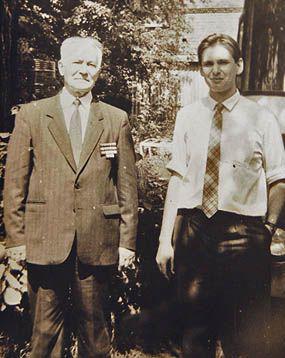
Head cafe.
Old Master. '80s. Kolomna. Photo by G. Chistyakov. A number of photos have a "continuation" these days. How it was in the USSR and how it is now. The first half of the 80s is very similar to the 70s, so very few photos are selected about school, kindergartens, holidays, etc. Anyone can watch the previous album.
The 80s are a very difficult period in the history of the USSR. This is his “golden period”, when there were no armies on Earth that could defeat us, the time of space stations and lunar settlement projects, the emergence of future technologies and the conquest of the harsh nature of the USSR. But at the same time, this is also the period of the development of his disease, which became fatal - the degeneration of the top into a disgusting clique. The time of the destruction of morality, lies and duplicity of ideologists, the beginning of civil and interethnic wars, Chernobyl, the time of the murder of a great country.
The 80s – this is the point of bifurcation, the fork – the USSR could become not a germ, but a real Society of the Future with developed and harmonious people, technologies of nature transformation, interplanetary flights, settlements on Mars, an unprecedented rise of science, technology, medicine, education. That's actually what it was designed to be. But events began to develop in a different way and the USSR-1 was killed by traitors in its own elite.
As we look at the unfolding global crisis and the economic misery of the West, we see that there were literally a few steps to complete victory. We didn't make it a little bit.

Bibirevo. Nach. 80s.
Still whole glass and doors in the entrances, there are no iron doors and large windows brewed with steel sheet - the entrance is light. Children can be released into the street without fear. Now it seems almost unbelievable.

Haymaking. 80s
The horrors of Soviet collective farms.

New School. Mid-80s
This is now the construction of a new school, a national event reported in the news. During the years of Soviet power, almost 200,000 (two hundred thousand) new schools were built in the USSR. There was enough money and enough children were born. The Germans destroyed 82,000 schools and rebuilt them. In the 70s - 80s, every year from 1,500 to 3,000 schools were built depending on the five-year plan - this is 5-10 new schools every working day, if it was told at least briefly - there would be no time for the rest of the news. It's hard to imagine now, isn't it?

I won't do it again! 80s
Trust relationship between student and teacher.
It is in the West that the relationship between student and teacher cannot be personal, human. For example, in the United States and Canada, teachers can simply revoke their licenses for human relationships with students. There should be nothing human in the New Order—divided cog people—ambitious, unhappy, lonely, easily controlled. In the USSR it was very different. The ideal from the very formation of the USSR was a harmonious personality and the education system was built for this purpose. Another thing is that there were a lot of mistakes – for various reasons, partly from ignorance – after all, the country made the very first attempt in history to create such an education, partly because the initial start from the position of “Russia-which we-lost” was painfully low, partly because so much effort went to fight off enemies. And from a certain period onwards the degenerate Party leaders began to fear the possible harmonious man and did not persist too much in his education. Despite its shortcomings, the Soviet education system was the best in the world. It could have been much better, but it didn’t.

First camera. 80s
Many boys were fond of photography, electronics, modeling, sports. To do this, there were special Houses of Pioneers with many circles for every taste - photo, radio, dance, biology and so on.

The first triangle. Early 80s.

Scooter. Sakhalin. Sir. 80s.
In the USSR, they were produced since the 50s. In the production of motor vehicles (1.5 million per year), the USSR ranked 2nd in the world after Japan. Our cars were very actively sold for export. We met on our roads and imported scooters and mokiki – Czech, Japanese, even Italian. Mopeds and small scooters cost a little more than 100 rubles, the rights to them were not needed. The photo shows, formally speaking, a minimotoroller - do not "step" through the frame. The word “mocic” refers to the 50s and meant that he was kicked by kicking a kick starter. In reality, they were often produced with an electric starter. What kind of car was in the photo, he never admitted. I've seen them sometimes on the streets. But mostly there were other "big" ones like "Supreme."
Many boys in the USSR raced on mopeds, especially in the 80s.

A cigarette behind the school. 80s

Kvass barrel. Siberia 80s
Kvass was very cheap. Glass - 3 kopecks., Politer mug - 5. Apparently, people celebrate some event - judging by the clothes, the girl is dressed in a dress, not the most comfortable for everyday life.

A barbecue in nature. Siberia. 80s
"There was no meat in the USSR," yeah. No matter what you look at the photos - all picnics with meat and kebabs.

So we did. 80s

A group of young people in the country. Early '80s
These are not the majors, not the children of salesmen - ordinary boys and girls. Probably from families of scientists. I think it's the suburbs.

Employees of the research institute at the ski base in Elbrus. Early '80s
The Caucasian ski resorts were among the best in the USSR. Almost any Soviet person could go there. I emphasize any. Georgian resorts were famous, especially Gadauri and Bakhkuriani. Armenian Tsakhkadzor was one of the points of preparation of the Soviet team, the Uzbek Chimgan was excellent, as well as the ski resorts of Ukraine, Kyrgyzstan, the RSFSR - Altai, Ossetia and so on.

Typical photo shop. 80s
This is what a typical Soviet photo shop looked like. Cameras, all sorts of lenses, photo papers, reagents, lamps, flashes and other dope shops were just littered. I remember that time very well – I have been doing photography since 1980.
Soviet cameras were among the best in the world - cheap, high-quality and very reliable. They were exported to many countries around the world, even England (since the 50s). Reviews of Western experts on the quality of optics and mechanics were enthusiastic. Complaints were caused by the exterior finish - they did not look as presentable as the Western, and, of course, the packaging. The British government has repeatedly banned the export of advanced Soviet models to save their manufacturer. Allowed only the import of cheap like "Amateur" and then "Schange". It’s a free market, you know.
It is hard to imagine now, but fakes under the Soviet brand Zenit were quite common - it was very popular. This is especially true for small Japanese companies.
Soviet cameras were bought or exchanged privately by foreigners. The USSR produced about 10% of the world’s cameras (about 3,500,000). 60-70 years called the "golden time" of the Soviet photo industry. Since the 80s, there has been a periodic shortage of cameras. What is very interesting, the problems began to appear not when the products became complex, but with their simplification and reduction of the range. That is, these were not problems of ease of the system, but problems of centralized control disruption.
Nevertheless, the position of the USSR in this segment remained extremely strong. Gorbachev’s reforms and “perestroika”, as well as everything else, dealt a mortal blow to the industry.

Residents of Pevek. Chukotka. Mid-80s
Just hard workers from the North. These are not employees of the Central Committee, not thieves or bullies. Leather coat with fur collar and very fashionable then "blown" jackets. We went to the North to make good money. Having worked in the north for 10-15 years, you could easily move to the south, buy a house or a cooperative apartment, a car and many more will remain. In the USSR, they knew that “the North has money.”

The Bear Kindergarten. Chukotka '80s
Therefore, the northern regions were developed very quickly. Beautiful cities and towns were built there, with wonderful kindergartens, schools and hospitals. In total, about 120,000 kindergartens were built in the USSR during the years of Soviet power.
The horrors of totalitarian childhood. Tea worn by ragged children?

Northerner Temchenko. Chukotka '80s
Like that, in a leather jacket and on the Kirovets. The people in the North have always been tough and strong, otherwise it is impossible.

Delivery of goods to the taiga. 80s
The USSR was the first in the world to begin intensive development of the North. Cities were built, military bases were built, a huge amount of research was conducted. Almost all the resources used today were discovered during the Soviet era.
Half of the USSR was in the permafrost zone. Even the zone of Baikal belongs to the zone of permafrost with a predominance of taliks (large areas of thawed soil). Despite the largest land area (1/6 of the Earth’s landmass), it is extremely difficult to use.
Not great economic sense in the territory, which consists of tundra, swamps and impenetrable taiga, right? But there are also mountains and deserts, there are simply cold areas where any activity is ineffective compared to warm regions. These are areas of Karelia, the White Sea, and northern Russia – there is no permafrost there, but it is very uncomfortable to live and work. As a result, the area of territory relatively convenient for human activity in Russia has always been very small.
In terms of the area of effective territories, Russia is inferior to countries such as Brazil, the United States, Australia and China. In particular, the effective territory of Russia is only 70% of the effective territory of the United States. This is despite the fact that a fairly large part of the territory of our main enemy is in an exceptionally favorable zone for activity - the tropics and subtropics (Florida, the Pacific coast, Hawaii, southern Texas). Russia’s “effective territory” is very different from that of England and France.
But we don’t have any other territory, so we have to use the one we have. It's stupid not to use half your land, is it? Inconvenient and expensive? In the capitalist system, of course. For example, Canada has not been able to develop its northern regions in principle, despite several attempts, and 90% of the population is squeezed to a warm border with the United States.

Northern pilots. 80s
The USSR was built as an integral system, as a single indivisible whole, and in it the development of the North and inconveniencies was very profitable. Everything was built in the complex - cities, power plants, roads, ports, mines, etc. Obviously, a large power plant for a mine has more efficiency than a small and temporary one. It is obvious that a large power plant does not make sense to build only for a mine and a small village of shift workers. Therefore, its power must be used for a fairly large settlement, transport, processing cycles, a port, etc. And if there is a port, why not use what the sea gives - fish, crabs, shellfish? The life of the shift worker, frankly, is very uncomfortable, away from the family, and here everything is nearby - schools, kindergartens, hospitals, sanatoriums, dispensaries, beautiful sports halls and libraries, television satellite - the Orbita program.
Individually, it was ineffective or ineffective, but together it was very effective. And given the role it played for the security of the state, it becomes clear that the role of the North is huge.
Immediately became available storehouses of minerals. At the same time, northern routes, ports, infrastructure, resorts, tourist routes (Kamchatka, Sakhalin, Kolyma) appeared on the basis of already formed infrastructure and so on. The cruel northern nature turned its other side - an amazing and harsh beauty. You just have to be able to handle her.

Environs of P. Sinegorje
The USSR was able to do this better than anyone else in the world, ahead of the whole world not by years, but by an entire epoch. His leadership in the development and transformation of cold lands was absolute. Integration, a single planned system - the know-how of the USSR, the first society of this type.
But that’s not all – space mirrors were being prepared to illuminate northern cities, creating a kind of thermal oases in the Arctic without destroying the ecosystem of the surrounding tundra.
The North is much cheaper than Mars. Mars and Venus were also planned. Interestingly, the development of Mars was planned to be conducted with the experience of the development of the Soviet North.

The dormitory. Cape Schmidt 80s
A network of small, carefully planned cities began to cover the North.
First, hostels were built for builders and shift workers, and then cities and towns were built, which is of any value to see. No exaggeration.
By the way, as a result of the collapse of the USSR on 65% of the territory of the Russian Federation is in the zone of permafrost and the development of the North, the top of the country is not interested - they are here temporarily.

"Yuzhak" - Singer, Chukotka 80s
In addition to the severe cold in those places there is another test - hurricane winds. Yuzhak is usually a spring wind bringing a storm.

Singer now
One thing is obvious: market economy is many times less efficient than socialist economy. The example before my eyes is the USSR. The “inefficient” USSR had enough money to build cities, maintain a powerful army, brilliant science, excellent education, advanced technologies in many areas, the most advanced space, many schools and kindergartens, a decent, although not rich by Western standards, life for almost the entire population, money was enough even to support developing countries and communist movements around the world. None of this in Russia in that form is close – there is no money for it, despite the fact that the future of our children is being exported at a rapid pace – raw materials, and the country is simply being sucked to the bottom.
The Soviet Union exported raw materials, but it accounted for most of its export earnings even in the worst Gorbachev years. In the 80s, the USSR earned only $ 12 billion a year from the export of hydrocarbons out of about $ 80 billion of total exports.
The Soviet Union was a major exporter of metallurgical, energy, chemical and other industrial equipment, ractors, cars, ships, helicopters and aircraft, televisions (mainly w / b), watches, optics, high-tech devices, isotopes, light medical equipment, medicines, weapons. All this has been practically destroyed, only a part of the war and metallurgy has remained since the days of the USSR, and even then only the old - nothing has been created under the "effective owners" of the new. The lion’s share of income is the export of raw materials.
That is, the conclusion is really this – “freed from totalitarianism” Russia is many times less effective than the USSR. Not to mention such concepts as humanity, morality, etc.

Singer now
Moreover, the continuation of “reforms” and the existence of the current ruling elite is the death of Russia and many other fragments of the great country. Death is quick and cruel.

Kadykchan 80s
The mining town of Kadykchan. Once one of the most beautiful cities in the northeast of the country. A deposit of unique stone coals.

The Dead City of Kadykchan Now
The city, as they say in those parts, was “thawed” (Northern slang), that is, the heating and water supply system was frozen in the northern frosts. The authorities considered it unprofitable - a sharp decline in production in the country made unique coals unnecessary. Now, to restore it, you need to change absolutely all the pipes in the city, inside every building, every room. In essence, it means rebuilding the city. All. The city is completely dead.

The Dead City of Kadykchan Now
Such cities were quite profitable under the USSR. The new regime and the formed socio-economic system showed complete inability to control a complex device. It is not even able to maintain the legacy inherited from the USSR – cities, infrastructure, factories, science, education, the army. There is no talk of building a new one. Who spoke of the “inefficiency” of the Soviet Union?

Signogorye. Kolyma, 80s
The most beautiful town-village of Magadan region. - Sinegorye. The city of hydropower is the world’s first large hydroelectric power plant built in extremely harsh natural and climatic conditions. The average annual air temperature minus 12 ° C, the continuous spread of permafrost up to 300 m thick, the temperature in winter falls below sixty degrees, seven months a year with a negative temperature make the construction of the Kolyma HPP a unique phenomenon in the practice of hydropower construction.
The height of the dam is 130 m. The HPP building is located deep underground and accommodates five hydroelectric units with a total capacity of 900 MW in an artificial underground cave. Water to the units is supplied in five tunnels with a length of 200 meters each. It is a masterpiece of world hydropower construction and energy. The first hydroelectric unit was launched in 1981. The most unique power plant was built in just 7 years.
The town-village for 10 thousand inhabitants had very comfortable residential houses, a hotel, a cinema, a sports complex with a swimming pool, a game and gymnastics hall, a hospital, a clinic, a dispensary in a beautiful place, a kindergarten, a school. The Communists mocked the people as much as they could.
In total, on the Kolyma River it was planned to create a cascade of three hydropower stations, building additionally to the Kolyma HPP Ust-Srednekanskaya (started in 1991) and Verkhne-Kolymskaya. Well, as you understand, after the collapse of totalitarianism somehow did not work out.

Signogorye. Now.
There are still areas that support the Kolyma HPP, but now - like this. The population has declined dramatically. Entire parts of the city have been destroyed. People live so well that they don’t even need privatized restaurants. The only building built in 17 years is a church. How about without her?
And how many such cities and towns are dead and half-dead in Russia? How many military towns were killed that could live well? There is no place for them and for the people who lived in them.
It is simply called a crime against one’s own people and country. This is what used to be called treason.

Strong pitching. Sakhalin Fishermen. 80s
The USSR had a large fishing fleet. After the destruction of the “inefficient USSR”, the number of fishing vessels in Russia decreased 2 times, more than 80% of ships are worn to the extreme and belong to the so-called “critical age”, the fleet was practically not updated – the shipbuilding industry was destroyed cleaner than after the defeat in a major war. Russian shipbuilding, which was one of the largest in the world, was on the verge of extinction.
In the late 80s, the USSR produced about 11 million tons of seafood, now about 3 times less, and 80% of officially mined for a pittance is sold to foreigners. Not processed food, not fished. But it's not just malice -- the processing industry is almost dead. The export of unprocessed seafood is a characteristic feature of a third world country.
Now the consumption of seafood in Russia is about 10 kg / person with a medical norm of 19 kg, in the USSR, by the way, was consumed in the 80s about 20 kg / person.

Sakhalin Fishermen. 80s
You can immediately see - very cool, persistent, skillful and brave guys.
157464
Trying to fix the hole on your own. Sakhalin 80s

Then fish and crabs were handed over to their base, and not quietly to the Japanese. According to the former chairman of the State Committee for Fisheries of the Russian Federation, Evgeny Nazdratenko, more than 40 of our vessels are unloading daily in the ports of Hokkaido. About 2 million tons of fish are smuggled out, no one really knows how much. According to Nazdratenko, due to Russian poaching, the Japanese have 1500% of their profits, equipped their ports and all infrastructure. The total amount stolen from our people is at least $ 7 billion a year. A “fish mafia” has formed and is thriving, extracting the resources of the Far East. There is no real fight against this, and the threads go to the very top – the so-called “government of Russia”. According to conservative estimates, the “fish mafia” pulls out about $ 3 billion a year. Russia’s fishing industry has been called the most corrupt of all.
Vessels and floating depots were sold for a pittance to foreigners, ruined by incompetent and predatory exploitation of the remnants of the Soviet fleet. The loss of one of the largest and most successful fleets in the world is not amenable to precise calculation. Many ships were sold for a pittance, many were destroyed by exploitation for slaughter, but even more were transferred under other flags.
58% of Russian ships now fly foreign flags, which is more profitable for ship owners. With large ships, the situation is generally shocking - by the time of the collapse of the USSR, about 1,800 large ships sailed under its flag. Currently, the Russian tricolor on the flagpole only 172 civilian ships. Patriotism has nothing to do with it - the main benefit, the shipowners say without hiding.
Our Pacific waters are now dominated by the Japanese. In 1998, the “government” of Russia concluded an agreement under which Japanese fishermen opened fishing in the South Kuril Islands without complying with the laws and regulations of Russia in the field of fisheries.
If this is not a state crime, what is it?
Old Master. '80s. Kolomna. Photo by G. Chistyakov.
Such people built the USSR after the war.

They worked for the defense. Factory of Hydroacoustic Devices "Red Ray" (photo by V. Dronov) 80-ies
The main purpose of the plant was the production of sonar and navigation systems for the Navy. High-tech.

Chassis for speakers such as Radio Engineering 35 AC. Photo: Kosaniuk L.
In addition, the plant produced very good audio speakers 35AS "Cliver", Ukraine, d Red Ray - foundry produces very popular at the time AC, analogues of Riga. The photo shows ready-made chassis for speakers.
Now this plant is killed - it was closed because he could not pay taxes, and his property was transferred to a small enterprise selling ketchup and vodka. The workshops of mechanical, frame-stamping, assembly and installation, production of plastics, printed circuit boards, galvanic and paint coatings, including land and buildings were estimated at about $ 6 million. Haytekovsky plant of this level is worth several billion.
They say that the so-called “Ukrainian state” is poor as a church mouse. So any richest country will go bankrupt if you sell property 3 orders of magnitude cheaper than it costs.
Strangely, it was a prosperous Soviet republic, and hysteria with self-determination was arranged under the pretext that “Ukraine is being eaten by Muscovites.” Like a rich and wonderful life "independent and independent" if not in the USSR.
The result of all this is "on the face." Just like on the face of the so-called President Yushchenko.

Chemical scientist R.A. Buyanov (center) 80s
A few words on the subject of Soviet science. The topic was chosen specially unassuming – chemistry.
The typical worthy Soviet scientist Roman Buyanov created a fundamental theory of the magnetic action of catalysts in the low-temperature conversion of ortho-hydrogen into para-hydrogen. Sounds harsh, doesn't it?! And the result of this was the creation of an entire industrial production of liquid vapor-hydrogen — it was the fuel on which our spacecraft Buran flew.
He and his collaborators further deciphered the “carbide cycle mechanism” as a result of which fundamentally new types of catalysts and what are now called “nanomaterials” – carbon nanofilaments were created. The entire industry of the USSR for the production of synthetic rubber worked on these catalysts for more than 10 years. These technologies were bought from us by advanced countries like France. Modestly so. By the way, scientists have developed a scientific classification of all possible causes of catalyst decontamination.
Soviet science was ahead of competitors in this field by 5-10 years. And in others, there were many more.
In 1979, Buyanov was appointed head of the Coordination Center of the COMECON countries on the problem of “Development of new catalysts”. On his initiative, a technical project was prepared for the construction of a specialized catalyst factory in Tomsk, where the production of fundamentally new catalysts developed in social countries was soon to begin. We, in theory, had to break ahead sharply, the profit of the plant promised enormous. Needless to say, the planned construction has not begun? The Soviet Union was facing an unprecedented technological takeoff and not only in the field of catalysis. That was one of the main reasons why he had to be killed so quickly.

Training Laboratory of the Institute of Chemical Technologies. DCK computers. 80s
Soviet computers are used to solve problems of chemical technology. Computers DVK (Dialogue Computing Complex) development and production of Zelenograd - the Soviet "Silicon Valley". They solved their task quite successfully, moreover, they were combined into a kind of local networks through special buses with control computers SM-1425. I've worked for them. There was no fundamental lag in electronics and computers from the West then. This was the result of “reforms.”
Do you know what happened to the factory that produced it? After a series of raider seizures under the so-called "President" Putin controlling stake in the plant was sold for... $ 7 million.

Squad 80s. The cowboy.
The first racks appeared in the USSR in the 60s and, in theory, were a very useful undertaking. The point was that during the summer holidays, students formed special detachments and went to work for 1.5-2 months where workers were needed. Not only was there no unemployment in the USSR, there was a constant shortage of workers. Students typically worked on urban construction projects in rural areas to build housing and infrastructure. There were also construction teams that worked on the restoration of cultural monuments (for example, in Kizha), there were detachments of student guides in trains, etc.
Stroyotrupov’s memories are some of the best for many students during their student years. Friendship, student novels, acquired construction professions, bonfires and guitars, construction traditions, Spartakiads – in general, it was very great. There were often adventures, for example, I had the opportunity to participate in extinguishing the steppe fire. In the construction team, poor students could work well.
Of course, they drank in the construction teams, but they knew the measure - you can not work effectively with heavy drinking. Payment was usually piece-premium ("chord"), that is, if you have time to hand over the object by a certain date - you will receive from 15 to 25 of the piece amount on top. Therefore, they did not want to tolerate a drunk and a fool in the squad. Construction squads were completely self-governing units and formed themselves - that is, the squad assembly could accept anyone and anyone to field.
The first detachments were built on the principle of “commune”, that is, the earned was divided equally. But in reality, it has resulted in a sharp drop in productivity and the disinterest of good workers—why plough to the ground if your money goes to some armless lazy person? For this reason, since the 70s, a time-tested “kolkhoz” system was introduced, but they did not enroll additional workdays, but established KTU – the coefficient of labor participation, that is, the coefficient by which the base salary was multiplied. KTU was established by universal open voting at the meeting of the detachment. I must say, the CTU was established quite fairly.
They were a great opportunity to see our great country. When, for example, would a person go to a Kazakh village or to the White Sea? And it was very useful for novice intellectuals to feel what hard physical labor is.

"Rather, the chord is on fire!" Squad 80s. The cowboy.
But the SSO has its other side: the construction teams (“construction workers”) of the 80s in many places degenerated into the most ordinary coven with all its disgusting sides. The processes of decomposition of the top of the country, which became quite obvious by the mid-80s, had a very strong impact on the construction movement. Although... where did they not reflect?
"Sabashki" - seasonal work for the purpose of large earnings, a phenomenon that formed in the USSR in the 60-70 years. Due to the processes of intensive urbanization, the share of the rural population decreased sharply, while the share of the population with higher education grew rapidly, that is, the number of workers in agriculture for heavy physical labor decreased significantly. Khrushchev’s destruction of the highly developed system of cooperatives and artels in the USSR led to a strong imbalance in the economy. There was a large number of orders from the kolkhozes, which could not fulfill the interkolkhozstroy — a specially created centralized organization. Small jobs were hard to do - there was no scope for a centralized organization.
At the same time, the progressive wage system, which in Stalin’s time was equated with anti-state activity, was destroyed. Progressive system is when the plan is over 100% was the coefficient of payment for the share exceeding 1.5, over 150% -2, over 200% - multiplier factor 3. That was "slave labor." Did you think that the mass movement of the Stakhanovites was based on pure enthusiasm under the leadership of the Communist Party? Yeah. Of course, there was enthusiasm, but there was also good money. And then all this was taken from people and the people began to respond with ever-increasing futility.
The kolkhozes and sovkhozes retained the share of financial and organizational independence left over from Stalinist times. They had the right to enter into seasonal agreements with the so-called temporary labor collectives. From this possibility and the beginning of the deregulation of the USSR economy in the post-Stalin period, the “sabashki” were born.
The unusual situation was that the Sabbath brigades were usually staffed by non-professional builders who worked during their summer vacation. Often in the brigades of Sabbaths worked researchers with academic degrees. Worked with a gross violation of safety, 12-16 hours a day. During the season (about 2-2.5 months) with the “correct hill” (head of the brigade), a good Sabbath earned 3-4 thousand rubles, and sometimes up to 7-8 thousand, which was significantly more than his annual earnings at his main job.
What this had a negative psychological effect on the image of the country in the eyes of its citizens, I think there is no need to explain.
A similar thing happened to the construction teams. For example, I was a concrete maker, thank goodness I did not hurt my health. During the construction season in the mid-80s (about 1.5 months), I brought about a thousand rubles - and this is already taking into account the food and the road. KTU (labor participation rate) was quite good, but where in the USSR did a professional concrete worker earn $1,000 a month, even for a 12-hour working day? And a professional concrete worker was clearly not matched by a self-taught student, albeit strong and smart. Another thing, this concrete worker was not interested in working the way they worked in the 30s - 50s, that's all.
What happened in reality - the chairman of the kolkhoz knew that no one would go to him for a wage of 300 rubles, so large sums were obtained at the expense of invoices in the kolkhozes and state farms. Well, who will check if you painted the wall in the Zapupinsky collective farm in two layers or five?
Often, the commander shared money with the chairman, who covered fake outfits. In large cities, this was usually not allowed and earned there as it should have been – 200 rubles per season.
And the result of this was this: whole mafia clans grew up, consisting of proven accomplices. From the construction squad figures turned Komsyukov rebuilders - "Gorbachev's infantry". And they were in the midst of a storm, and that was their time.
It was they, together with the institute secretaries, who launched a scam with NTM (scientific and technical centers of youth creativity). Since 1987, NTM centers have been actively working to transfer non-cash money into cash, playing an important role in the destruction of the Soviet financial system. NTM did not pay any taxes at all (!), but 30% was transferred to local and central funds of NTM. There were, of course, ascetics who did not participate in this obscenity, but honestly promoted innovative models, but alas, they did not make the weather.
Cashing occurred for 50% of the value of the fake order for “scientific development” given to such a center. The mechanism of theft and division of stolen with superiors has already been worked out in the construction teams. “Komsomol capitalism,” as it was then called, received a green street in the plunder of the country, huge sums of money were “unfastened” to their “roofs” in the Central Committee and other key organizations. NTM and the enterprises created under them received the exclusive right to import office equipment and export some products for currency, which was purchased office equipment, which was then sold for rubles. Profits on one cycle reached 2000% - I'm not kidding.
People who didn’t participate were thrown out of the system. Thus the first Komsomol oligarchs were formed under the close control of the Central Committee of the CPSU and the leadership of the Soviet special services. Around such centers of crystallization, cunning accomplices gathered, contacts with organized crime were established - Russian business was formed. Interestingly, the very well-known Bank Menatep was registered as a subsidiary farm of one such NTM, and NTM could receive loans without interest and immediately gave this money in growth.
The names of these figures are on everyone’s ears, and their faces are on TV. I don't want to put pictures here. Their curators usually did not occupy the seats of vice-chairmen, but took control of key points of the state apparatus. It turned out to be the bastard system that we have now.
Could it have been stopped? Simply, and strictly within the framework of the law, but it was not done in principle – the goal of the degenerated elite was different.
The phenomena that took place were not characteristics of Russian socialism, they were only signs of its disease, which was purposefully untreated. After the destruction of the USSR, all these sores, coupled with new ones, turned the country into a walking rotting corpse.
Did people see it, for example, ordinary Komsomol members? We saw it and looked at it with disgust. Without a doubt, the real Komsomol members - 20-40 years without hesitation would have slapped all these Komsuks as a classic "contra". These are the “counter” traitors who destroyed the system and the country they swore to serve until their last breath.

Head cafe.
